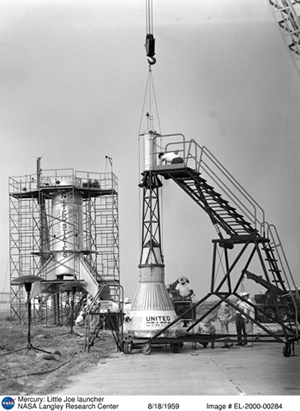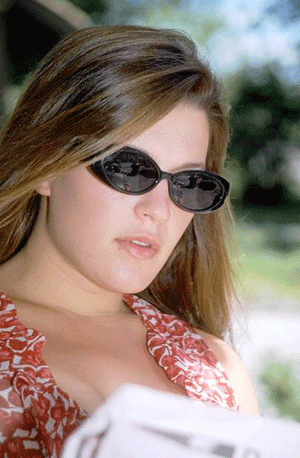What Real Science is about
Aims
To help learners understand topical science stories.
To help learners interview real scientists.
Literacy across the curriculum
There are high barriers to understanding a science story that often  have nothing to do with prior science knowledge, or its absence. As teachers we need to support learners over those barriers.
have nothing to do with prior science knowledge, or its absence. As teachers we need to support learners over those barriers.
Real Science does this by providing steps or scaffolding, in the form of activities that can help learners engage with a science story. These can raise them to a level where they are able to tackle the science itself. (In terms of Scotland’s Curriculum for Excellence this is literacy across the curriculum.)
When the learners start to engage with and interview real scientists through the Real Science website, similar steps will prove valuable - and should by then be fairly familiar.
But just building the scaffolding is not enough, because learners will not necessarily ascend it by themselves. We also need to devise activities that encourage them up the steps. Real Science does this in a number of ways, as described below.
To see all this in action please go to a science story and the lesson plan to which it links. (Note: We are describing the new structure for Real Science stories as of September 2010. Older stories in the archives follow a different structure, with a separate Discussion page instead of a lesson plan.)
Barrier 1 Readability
Science stories in newspapers and on TV are mainly written by journalists - and sometimes scientists themselves - who have little understanding of the difficulties faced by large numbers of young people in reading unfamiliar texts. This can easily be demonstrated by putting popular science stories through a readability checker. Most come out unreadable.
Even if a text is "readable" for an average 14-year-old, that still means up to half the learners of that age could struggle with it. In addition, research shows that learners retain far more when reading well below their reading level, and that to read entirely independently the reading level of a learner should be several years above that of the text. It is also known that when motivation levels are low and a narrative thread is weak - as it often is in a science story - levels of readability have a greater effect on a learner's comprehension.
For all these reasons we need to demand high levels of readability from science texts, or large numbers of learners will get very little from them.
Step 1 Write to be read
Real Science works on science stories to make them more readable. We also write our own, using our experience as journalists, teachers and scientists.
Besides personal contact and interviews with researchers, we work with topical science press releases from news agencies like Eurekalert, AlphaGalileo and Newswise. These are the same sources used by the journalists who write the science stories in newspapers and on television.
Unfortunately that places two, usually non-scientific minds between the science and the reader. The journalists who write the newspaper stories and the public relations people who write the press releases only rarely have any science training.
This is one reason newspaper stories seldom deal with the science itself, but almost exclusively with its potential applications – a cure for cancer, a genetic test, a source of cheap energy – or with the social, ethical and environmental issues raised by the new science. (There is another, equally important reason, discussed in Step 4 below.)
Barrier 2 Hard words
Words and phrases used in a science story can be difficult, unfamiliar or have meanings that differ subtly and sometimes not so subtly from everyday usage.
Step 2 Pop-up meanings
Real Science provides pop-up meanings by mouseover for scientific terms and for less familiar non-scientific words. On the initial page these pop-ups are few and selective. But a second page is also provided, with pop-ups for all the hard words in a story. The location of this second page is given in the lesson plan linked to from each news page.
We do it that way because part of that lesson plan asks learners to improve their own comprehension by trying to clarify meanings of hard words for themselves. If these meanings are readily available to them, little learning will take place.
Barrier 3 Passive readers
Good readers are active readers, constantly questioning a text and wondering about words and their meanings and nuances. Poor readers are largely passive and simply skip ahead uncomprehendingly when failing to grasp a word, phrase or sentence.
Step 3 Activities
A number of approaches exist to help passive readers become more active and understand more of a text. The approach we adopt in our lesson plans is called reciprocal teaching or reciprocal reading. This method is currently helping whole classes get to grips with unfamiliar texts in schools around Scotland, including primary schools in East Dunbartonshire, Moray and Aberdeenshire.
Reciprocal reading provides structure and activities grouped into four sets: predicting, questioning, clarifying and summarising.
Barrier 4 Absence of schemata
Research shows that new and especially abstract ideas are learned and understood best if a learner already has a pre-existing mental framework into which newly-gained knowledge can be fitted. These frameworks are called schemata.
For most science stories the average reader will possess little previous knowledge that can form these schemata. So hooks to hang their contents on are hard to find.
This is another reason that newspaper and TV stories almost always focus on the applications of new science or the social, ethical and environmental issues it raises. They almost never discuss the real science – the experimental methods, the competing hypotheses, the analysis of results. Newspapers editors know they will lose readers if they do. Few readers grasp the subtleties of significance testing, but we all care about cures for cancer. We all have opinions on wind farms.
Ensuring all learners in a class have pre-existing knowledge of the particular area of science in a new story is impractical, both for Real Science or for the teacher. But what we can do is provide learners with a general schema for science stories – one they can use for every story they encounter. Here it is.
Step 4 Science story schema
Popular science stories are built out of just 10-12 different types of statement. The most common of th ese are:
ese are:
1) New findings
2) Accepted knowledge
3) Methods and technology
4) Applications and issues
A story based on a general interview with a scientist, rather than a newly published scientific paper, will often contain
5) Aims of the research
Stories that get seriously into the science will usually contain one or all of these three kinds of statement:
6) Hypothesis
7) Evidence for a hypothesis
8) Prediction
In addition, science stories will often contain statements of these two types:
9) Future work
10) Questions
And finally a science story will sometimes contain:
11) Personal or other non-science statements
Methods of using this schema in tackling new science stories are described in detail in the lesson plans that accompany each new story from September 2010 onwards.

